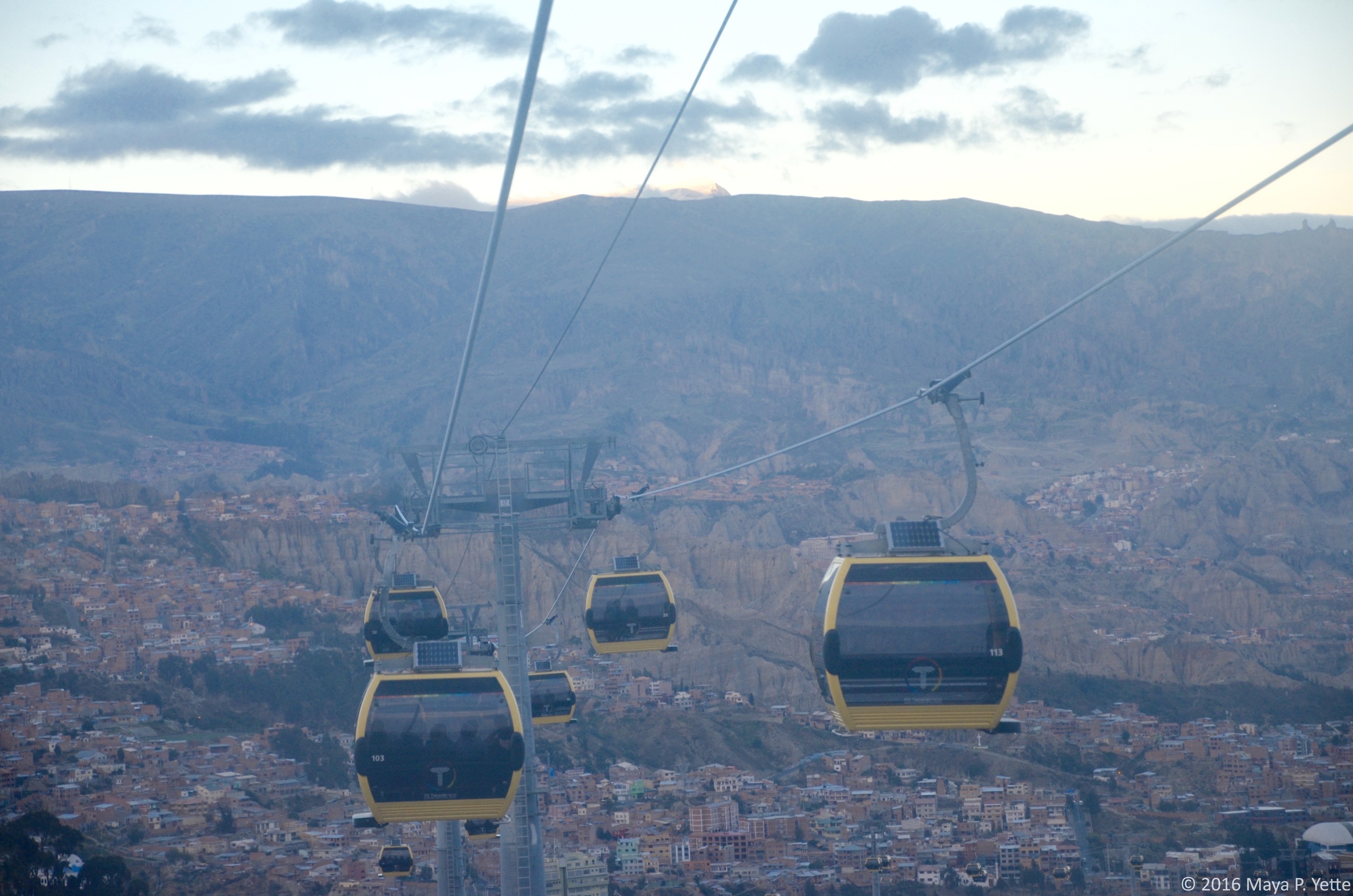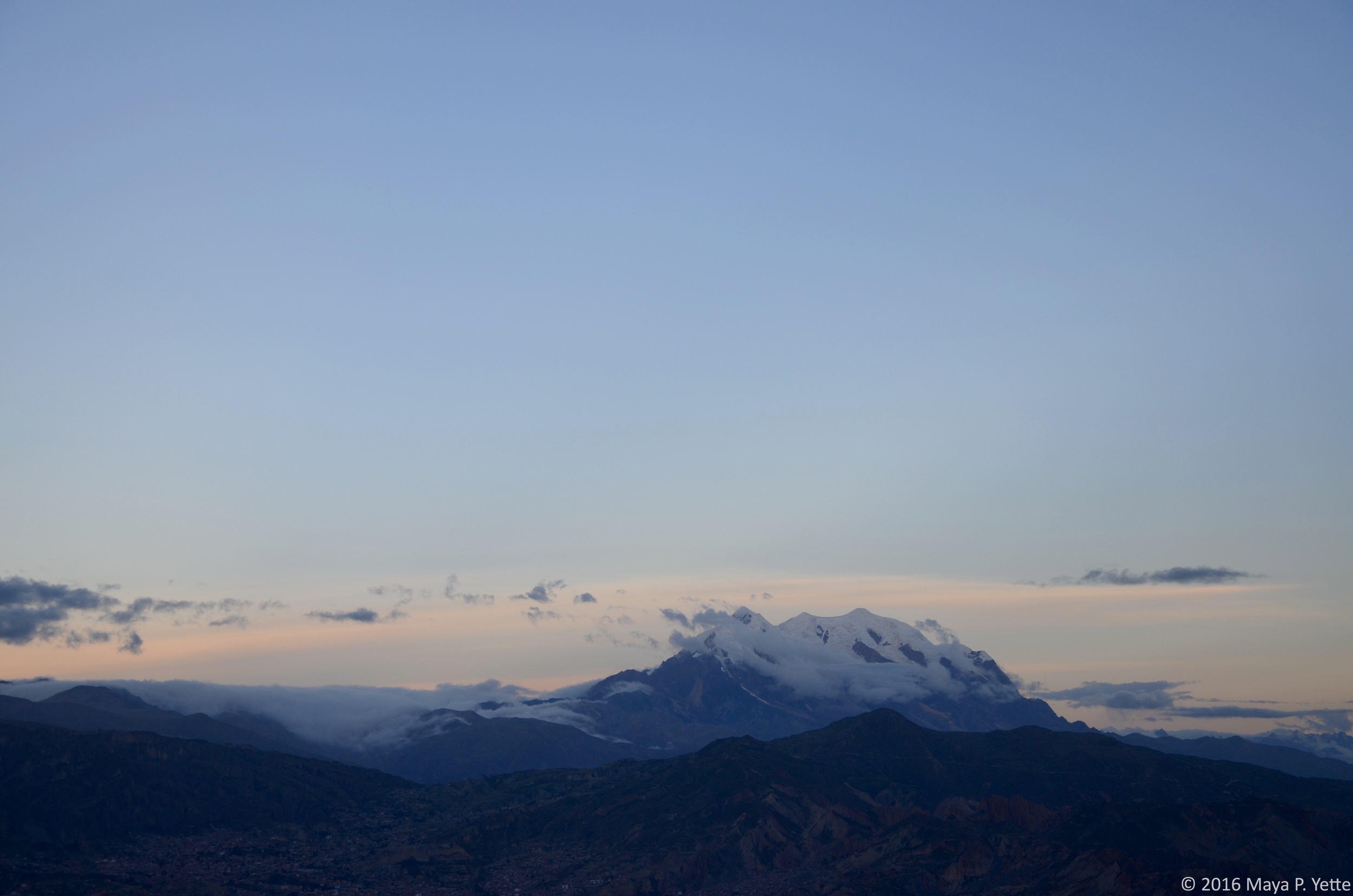I’ve been in La Paz, Bolivia for two weeks now and although I've been lucky and didn’t suffer the worst effects of altitude sickness (I’ve been told it feels like a really, really bad hangover complete with nausea and headache), I still find myself short of breath when walking up a flight of stairs or one of the many hilly streets throughout the city. La Paz is anywhere between about 10,000 feet to 13,000 feet above sea level depending on where you are in the city, enough to make it the highest de facto capital city in the world – de facto because Sucre is the true capital but La Paz actually houses more government departments.
Despite the minor inconveniences of not being able to catch my breath due to the altitude and pollution, the fact that the altitude makes me constantly sleepy, and the fact that I only remember about half the time that we’re not supposed to flush toilet paper here (seriously!), I’ve found myself enjoying La Paz more than I did Montevideo or Buenos Aires. So have many other people in Remote Year, notwithstanding the broken bones, salmonella and general illnesses that have plagued our group this month. Perhaps it’s because I had little to no expectations upon arriving in La Paz late on a Sunday night a couple weeks ago or perhaps it’s because Bolivia is the first country we’ve been to on Remote Year that really feels different. Around 60% of the population is indigenous (in Montevideo, all of the indigenous people were killed off and Buenos Aires’ population looks largely European as well). In Bolivia, there are “cholitas” (not to be confused with “cholas”, which the cholitas view as a derogatory term) everywhere, walking around proudly in their colorful flowing skirts and top hats, long braids flowing down their backs. The traffic in La Paz is terrible and car horns serve as a constant soundtrack when walking around the city. La Paz has a population of roughly 1.8 million people but feels infinitely more crowded and busy than the other South American cities I’ve lived in for the past two months.
There is no shortage of things to do in La Paz and the surrounding Bolivian countryside and we’ve all quickly come to rue the fact that we only have one month in this amazing country. My first week in La Paz was also my first week on a new job, so I’ve had to make the most of my nights and weekends. From walking tours around the Sopocachi neighborhood where we’re staying this month, to dinners at Gustu and Ali Pacha, both of which offer delicious tasting menus, and rides up the cable car (in my opinion, La Paz’s best form of public transportation) from La Paz to the neighboring city of El Alto, it has not been hard.
El Alto is also home to the infamous and bizarre “Cholita Wrestling” show. Inspired by the WWE in the U.S. and lucha libre in Mexico, the cholitas deck themselves out in fantastic costumes and put on a show that is meant to empower the women and entertain their audience. Bookended by men’s wrestling matches, the cholitas are clearly the highlight of the show and what locals and tourists alike come out every Thursday and Sunday to witness.
On the weekends, I typically find myself heading out of the city limits to explore everything else that Bolivia has to offer (I wrote most of this from a bus heading back to La Paz from a weekend visit to Isla del Sol, but more about that in a later post). Last weekend, some of my friends and I went mountain biking on Bolivia’s “Death Road”, known as one of the world’s most dangerous roads.
The first 45 minutes of the ride are along a winding, paved highway that offers breathtaking views of the mountains and cold temperatures that require gloves, hats and layers of clothing underneath the helmet, jacket and pants supplied by our tour operator. Once we reached the start of the actual Death Road, which is entirely dirt and rocks, we were literally among the clouds and could not see anything but their white nebulousness off the side of the mountain. As we descended the narrow road into the jungle, the clouds cleared, we shed layers as the temperature increased and we never let go of the brakes on our bikes. It was really hard to fully appreciate the beauty around us while riding the bikes because I was so focused on not falling or riding over the edge of the cliff (there were no guardrails and it’s not called Death Road for nothing). Thankfully, we stopped often to rest and the guides were able to take lots of photos of us. During the last twenty minutes of our 40-mile ride the skies opened up and the dark clouds we’d been trying to out-bike all afternoon finally caught up with us. We arrived to the bottom of the mountain soaking wet, but with adrenaline coursing through our veins. It was a good thing too, because we still had to head back up the mountain to go zip lining across the jungle!















